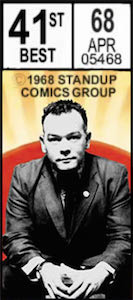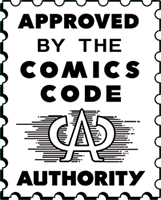Stew's Writing Written For Money
An Arthur Shaped Hole
Like all good mythical heroes, King Arthur is all things to all men. For the poets of the middle ages, his legend provided the perfect empty vessel into which to pour the ideals of Courtly Love. For Henry II, who attempted to legitimise his own rule via Arthurian precedents established in Geoffrey Of Monmouth’s semi-spurious Historia Regum Britanniae, Arthur was a political propaganda tool. For the monks of Glastonbury Abbey, who fabricated Arthur’s tomb sometime in the late 12th century with an eye on box office receipts of their own, Arthur was a money-spinning tourist attraction. And for an antiques dealer I got talking to in a field in Cornwall twenty years ago, Arthur was his personal friend, who had told him in a vision at Stonehenge that he would return and wreak havoc should the Tories get re-elected. They did and Arthur didn’t. For screenwriter David Franzoni, who comes to producer Jerry Bruckheimer’s King Arthur armed with credits for Gladiator and Jumping Jack Flash, Arthur is a metaphor for American Vietnam GI’s. But the movie he’s written has a unique selling point that no other modern interpretation of the Arthurian story can lay claim to. It says it’s true.
Almost nothing is known of the historical King Arthur. Most writers, whether they are suspicious academics or the excitable enthusiasts that fuel the vast Arthurian publishing industry, agree that the few scant references to similarly named soldiers in near contemporary texts, most notably Gildas’ 6th century De Excidio Britanniae, suggest ‘Arthur’ was a Dux Bellorum, a military leader in 5th century Roman Britain. His subsequent fame saw his actual life-story subsumed into existing Celtic myths, and later elaborated into the chivalric Romances of the Mediaeval courts.
Building on these flimsy foundations, Bruckheimer’s King Arthur claims a genuine Romano-British general, Lucius Artorius Castus, as its Arthur, and bolts him to a band of indentured soldiers from Russia active in Roman Britain, called Sarmatians. Artorius leads these disgruntled veterans in one last mission, before uniting the helpless Britons and the elf-like Picts, here called ‘Woads’, against the Orc-faced Saxon invaders in a face-off at Hadrian’s Wall. It’s a plausible tale, which is neither compromised nor enlivened by any obvious mythical elements, though it does include the slow motion sequences and Celtoid sound-scapes mandatory in Hollywood historical blockbusters. If he existed at all then, King Arthur wasn’t a king as such, and Jerry Bruckheimer knows this. But, like those tomb-making monks, he also knows that a recognisable brand will sell. Make King Arthur and they will come. Make Arthur and they will still come, but they’ll be expecting a remake of the Dudley Moore classic, perhaps starring Steve Coogan.
Just as Henry II had Geoffrey Of Monmouth to sure up his dynastic integrity, Bruckheimer also has his trump card. John Matthews is the movie’s historical advisor. He has a vast knowledge and a small beard, and has written over fifty books on Arthur, ranging from lavishly illustrated coffee table tomes, like his soon to be available Merlin – Shaman, Prophet, Magician (Mitchell Beazley), to Elements of The Arthurian Tradition (Element), an incense-suffused study of the legends’ symbolism, which concludes each chapter with an exercise designed to help the reader meet their inner Arthur. By his own admission, it’s professionally expedient for Matthews, as a major player in what one might call ‘the Arthurian industry’, to entertain various theories without committing to any one, but he’s sold on the Sarmatians.
“We know there were these Sarmatian warriors that were stationed near Hadrian’s Wall. What we don’t know about are any of the individual characters, so you do have to bring in a little bit from the later stories.” But is Bruckheimer’s King Arthur the definitive Arthur? “What you can say about this one is it’s based on the oldest version of Arthur. Lucius Artorius Castus is the oldest character with that name in that place at the right time. When I was originally approached by the film company I wasn’t entirely convinced of the Sarmatian theory, but in the process of the research I found new evidence. My wife was working on some translations from the old Welsh and came across this poem, which had not been translated properly before, from the book of Taliesin which, even though it wasn’t collected until the middle ages, dates back to 6th century. It mentions Arthur, a man of two cultures, Roman and British, who leads the defence from The Great Wall. I was gob-smacked.”
The press pack for the movie opens with the verse Matthews cites, attributing it not to Taliesin but to a vague ‘6th century A.D. Celtic poem’, in such a way as to make it, and the information that follows it, seem somehow suspicious. ‘Yes,’ says Matthews, ‘well it shouldn’t have been in there at all because they don’t actually have permission to use it.” It doesn’t help that the movie itself opens with a brief summary of the Dux Bellorum idea, followed by the inconclusive sentence; “Recently discovered archaeological evidence sheds light on Arthur’s true identity’. “I know, I know, I wanted them to put something else,” sighs Matthews, “ ‘Recently documented evidence’, anything would have been better, but having said that the excavations at Ribchester in Lancashire have revealed a Sarmatian presence, so in that sense it’s not untrue. But in the press showing here quite a few people laughed when that came up and I couldn’t blame them. They wanted to put the stamp of historical authority on it. I mean, I gave them two other alternatives that they didn’t use, but you can’t win everything.”
“John and I made copious notes about that all of which they ignored.”, the screenwriter David Franzoni elaborates. “I wish they’d either said nothing or been specific. My feeling was when you’re trying to be historically accurate, if you’re going to say something you’d better really say it, rather than just throw it out there. But as far as an American audience goes they’re numb to that sort of opening. It’s like, “In a kingdom far way etc.” Jerry Bruckheimer was very concerned but it isn’t his call. Jerry really wanted us to go back and try and find the source of the Arthur legend.” I laugh, assuming Franzoni’s deliberately painting a comic picture of the producer of Pirates Of The Caribbean as Historical Philanthropist, and then realise that he is being serious and quickly move on.
Franzoni has done his research and can stand by any historical information in King Arthur. But, like Geoffrey of Monmouth almost a millennium ago, Franzoni fits into a long tradition of Arthurian writers pursuing their own agenda. The film’s depiction of Rome’s waning imperial influence, of its exploitative client state relationship with Britain, of its maltreatment of its prisoners and its vulnerability to bands of Pictish insurgents, seems to directly parallel America’s current situation. “I understand Rome’s posturing when it became the ultimate military state. It comes from fear. And America is perhaps going through a lot of that right now so it’s not unfair to read into it that it could be about Iraq. But I began writing the movie before we went into Iraq. The GI connection is what is important for me. (Like the Sarmatian knights) if you’re a GI you’re surrounded by people that hate you, you hate what you’re doing, but you have to do it or you’ll die and you’re living for the day you get out. And that is about America. I see Arthur as being like someone drafted to Vietnam, who goes there full of ideas and gung ho and gets it all shot away and comes down to himself. And that used to be an American hero but we’ve become so cowboy-ed and JohnFord-ed and numbed we’ve lost track of who we once were.”
In King Arthur, David Franzoni sends Arthur north of Hadrian’s Wall to save a Roman nobleman, but he ends up finding that most reliable of Hollywood devices, the hero within. If we’re to believe Franzoni’s testimony, Jerry Bruckheimer sent the screenwriter himself on a special mission to 5th century Britain to find the real historical Arthur. But Franzoni has brought back Shane, an all American hero, missing in action, long presumed dead. Matthews describes the lack of actual historical evidence for the personalities that stemmed the first Saxon advance as ‘an Arthur shaped hole’. As a writer, Franzoni has filled the Arthur shaped hole with the story he wanted to tell. Even though the film is marketed on its historical objectivity, the subjective influence of the people who actually made it is delightfully evident. And the historical debate is largely irrelevant. Arthur is lost. King Arthur is the latest in a long line of responses to the power of his legend. The armour onscreen may be more accurately recreated than ever before but, as usual, King Arthur, the Summer blockbuster, tells us more about our own times than it does about those it allegedly depicts.
OTHER ARTHURS
The Life Of St Cadoc – Lifric of Llancarfon – 1075. In this Mediaeval Welsh text King Arthur gambles away his money, lusts after a peasant, and gets into a violent argument over the colour of some cows he has bought, which then turn into sticks.
The Modena Cathedral Carving – The image of Arthur over the door of Modena Cathedral in Italy is from 1120, indicating how far the stories had spread even before their definitive written versions.
Lancelot Du Lac – Robert Bresson – 1974. Bresson’s Arthur is just like any other middle aged man in an early 70’s French art film, wandering around slowly having existential crises. The only difference being that he is wearing full plate mail armour.
Monty Python and The Holy Grail – 1975. Python’s vision of the Knights of The Round Table remains the standard by which all others must be judged. Once seen, the fearsome Knights who say ‘Ni’ can never be forgotten.
Excalibur – John Boorman – 1981. Boorman abandons narrative cohesion for a rich, if ill-conceived, symbolist fantasia that approaches the strange, inexplicable attraction of the Arthurian myths themselves. Nicol Williamson’s Merlin is funny and terrifying. Helen Mirren’s Morgana Le Fay is dependably arousing.
Camelot 3000 – DC Comics – 1988. This bewilderingly acclaimed comic book series sees Arthur emerge from a cave underneath Glastonbury Tor to save the Earth of the future from Alien invasion.

